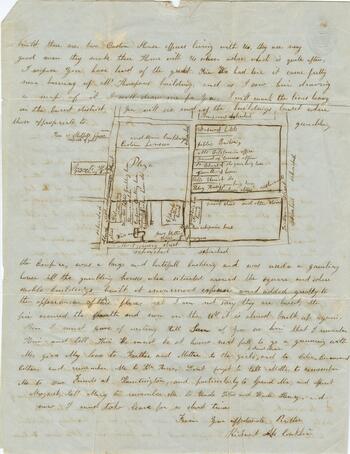Named for its abundance of freshwater springs, Cold Spring became a port of delivery in 1799. “Harbor” was added to the name in 1826 to avoid confusion with a similarly named town on the Hudson River. The village became a whaling port in 1836 when John H. and Walter R. Jones persuaded 33 friends to purchase the three-masted bark Monmouth from Boston. The Cold Spring Whaling Company grew to own 9 ships which sailed to every ocean on 44 voyages. Though the whaling company’s existence was relatively brief (1836-1858), the industry was a local economic anchor.
Cold Spring Harbor resident John Hewlett Jones seemed to have the Midas touch. At 23 his father gave him two parcels of land on which he built his first home and a small general store. By 1820 he opened two textile mills whose wool was awarded in New City the Next Year. When the woolen business began to lag due to global competition he turned to whaling, becoming the principal figure and managing agent of the Cold Spring Whaling Company.
John H. and Walter R. Jones were proprietors of numerous other businesses both in & out of Cold Spring Harbor including a grist mill, cooper’s shop, the Cold Spring Steamboat Company, lightering business, and the Hicksville and Cold Spring Railroad Company.
